Audi Q8 e-tron vs BYD Seal U – Performance, range & efficiency compared
Compare performance, boot capacity, efficiency and price at a glance.
Find out which car is the better choice for you – Audi Q8 e-tron or BYD Seal U?
Costs and Efficiency:
When it comes to price and running costs, the biggest differences usually appear. This is often where you see which car fits your budget better in the long run.
BYD Seal U has a clearly advantage in terms of price – it starts at 34300 £, while the Audi Q8 e-tron costs 65100 £. That’s a price difference of around 30780 £.
In terms of energy consumption, the advantage goes to the Audi Q8 e-tron: with 19.70 kWh per 100 km, it’s barely noticeable more efficient than the BYD Seal U with 19.90 kWh. That’s a difference of about 0.20 kWh.
As for range, the Audi Q8 e-tron performs slightly better – achieving up to 595 km, about 95 km more than the BYD Seal U.
Engine and Performance:
Under the bonnet, it becomes clear which model is tuned for sportiness and which one takes the lead when you hit the accelerator.
When it comes to engine power, the Audi Q8 e-tron has a noticeable edge – offering 503 HP compared to 324 HP. That’s roughly 179 HP more horsepower.
In acceleration from 0 to 100 km/h, the Audi Q8 e-tron is evident quicker – completing the sprint in 4.50 s, while the BYD Seal U takes 5.90 s. That’s about 1.40 s faster.
In terms of top speed, the Audi Q8 e-tron performs to a small extent better – reaching 210 km/h, while the BYD Seal U tops out at 180 km/h. The difference is around 30 km/h.
There’s also a difference in torque: Audi Q8 e-tron pulls convincingly stronger with 973 Nm compared to 550 Nm. That’s about 423 Nm difference.
Space and Everyday Use:
Cabin size, boot volume and payload all play a role in everyday practicality. Here, comfort and flexibility make the difference.
Both vehicles offer seating for 5 people.
In curb weight, BYD Seal U is clearly perceptible lighter – 1940 kg compared to 2585 kg. The difference is around 645 kg.
In terms of boot space, the Audi Q8 e-tron offers hardly perceptible more room – 569 L compared to 552 L. That’s a difference of about 17 L.
In maximum load capacity, the Audi Q8 e-tron performs slightly better – up to 1637 L, which is about 172 L more than the BYD Seal U.
When it comes to payload, Audi Q8 e-tron evident takes the win – 595 kg compared to 410 kg. That’s a difference of about 185 kg.
Who comes out on top?
Overall, the Audi Q8 e-tron shows itself to be outperforms in nearly all aspects and secures the title of DriveDuel Champion.
It convinces with the more balanced overall package and proves to be the more versatile choice for everyday use.
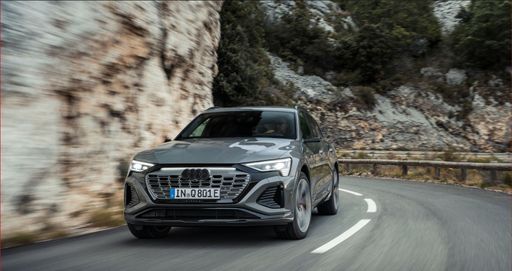
Audi Q8 e-tron
Audi Q8 e-tron
The Q8 e-tron stands out with its striking design and luxurious interior, offering a seamless blend of sophistication and cutting-edge technology. This all-electric SUV not only promises an exhilarating driving experience but also emphasizes sustainability without compromising on performance. With its spacious cabin and advanced infotainment features, the Q8 e-tron is sure to appeal to those seeking both comfort and efficiency in their next vehicle.
details @ Audi
@ Audi
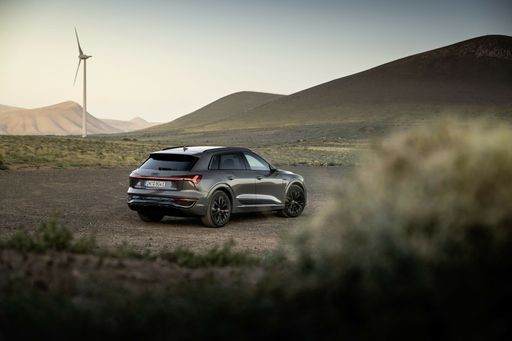 @ Audi
@ Audi
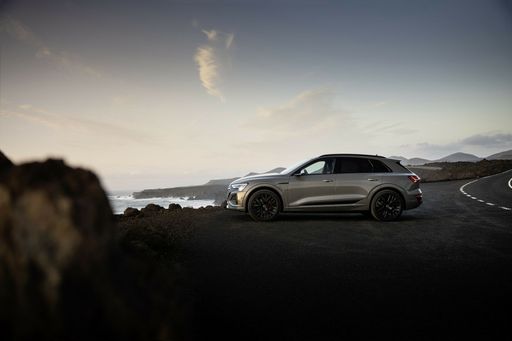 @ Audi
@ Audi
 @ Audi
@ Audi
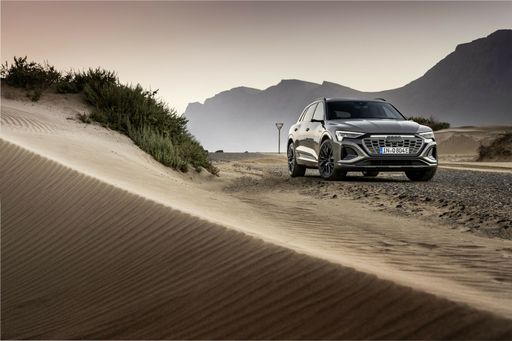 @ Audi
@ Audi
 @ Audi
@ Audi
 @ Audi
@ Audi
BYD Seal U
The BYD Seal U presents itself as a sophisticated addition to the electric vehicle market, blending sleek design with cutting-edge technology. Its modern aesthetic is complemented by a spacious interior, offering both comfort and functionality for drivers and passengers alike. With advanced features prioritising sustainability and performance, it represents a bold step forward in eco-friendly motoring.
details @ press.bydauto.be
@ press.bydauto.be
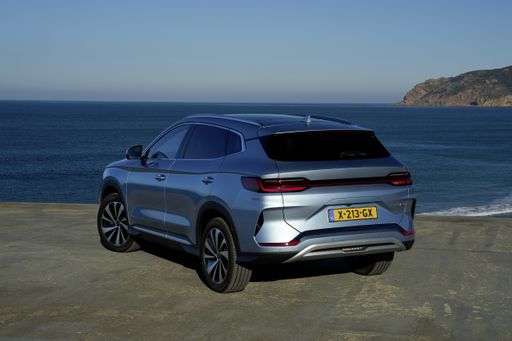 @ press.bydauto.be
@ press.bydauto.be
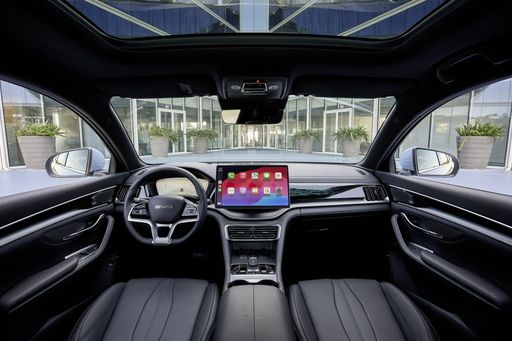 @ press.bydauto.be
@ press.bydauto.be

|

|
|
|
|
Costs and Consumption |
|
|---|---|
|
Price
65100 - 102800 £
|
Price
34300 - 39800 £
|
|
Consumption L/100km
-
|
Consumption L/100km
0.4 - 1.2 L
|
|
Consumption kWh/100km
19.7 - 26.3 kWh
|
Consumption kWh/100km
19.9 - 20.5 kWh
|
|
Electric Range
456 - 595 km
|
Electric Range
70 - 500 km
|
|
Battery Capacity
89 - 106 kWh
|
Battery Capacity
-
|
|
co2
0 g/km
|
co2
0 - 26 g/km
|
|
Fuel tank capacity
-
|
Fuel tank capacity
60 L
|
Dimensions and Body |
|
|---|---|
|
Body Type
SUV
|
Body Type
SUV
|
|
Seats
5
|
Seats
5
|
|
Doors
5
|
Doors
5
|
|
Curb weight
2585 - 2725 kg
|
Curb weight
1940 - 2147 kg
|
|
Trunk capacity
528 - 569 L
|
Trunk capacity
425 - 552 L
|
|
Length
4915 mm
|
Length
4775 - 4785 mm
|
|
Width
1937 - 1994 mm
|
Width
1890 mm
|
|
Height
1617 - 1683 mm
|
Height
1668 - 1670 mm
|
|
Max trunk capacity
1567 - 1637 L
|
Max trunk capacity
1440 - 1465 L
|
|
Payload
515 - 595 kg
|
Payload
410 kg
|
Engine and Performance |
|
|---|---|
|
Engine Type
Electric
|
Engine Type
Plugin Hybrid, Electric
|
|
Transmission
Automatic
|
Transmission
Automatic
|
|
Transmission Detail
Reduction Gearbox
|
Transmission Detail
CVT, Reduction Gearbox
|
|
Drive Type
All-Wheel Drive
|
Drive Type
Front-Wheel Drive, All-Wheel Drive
|
|
Power HP
340 - 503 HP
|
Power HP
218 - 324 HP
|
|
Acceleration 0-100km/h
4.5 - 6 s
|
Acceleration 0-100km/h
5.9 - 9.6 s
|
|
Max Speed
200 - 210 km/h
|
Max Speed
170 - 180 km/h
|
|
Torque
664 - 973 Nm
|
Torque
300 - 550 Nm
|
|
Number of Cylinders
-
|
Number of Cylinders
4
|
|
Power kW
250 - 370 kW
|
Power kW
160 - 238 kW
|
|
Engine capacity
-
|
Engine capacity
1497 - 1498 cm3
|
General |
|
|---|---|
|
Model Year
2023 - 2024
|
Model Year
2024
|
|
CO2 Efficiency Class
A
|
CO2 Efficiency Class
B, A
|
|
Brand
Audi
|
Brand
BYD
|
What drive types are available for the Audi Q8 e-tron?
The Audi Q8 e-tron is offered with All-Wheel Drive.
The prices and data displayed are estimates based on German list prices and may vary by country. This information is not legally binding.
